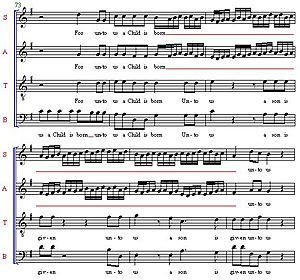Melisma facts for kids
A melisma is a special way of singing in music. It's when a singer sings just one syllable of a word, but uses many different notes for that single syllable. Imagine stretching out one sound over a whole bunch of notes! People often call these "vocal runs" or simply "runs." When music uses a lot of melismas, we say it is melismatic.
Contents
What is a Melisma?
Think of it like this: normally, each syllable you sing gets its own note. For example, in the famous "Alleluia Chorus" from Handel's Messiah, each part of the word "Alleluia" has its own note. This is called syllabic singing.
But with a melisma, one syllable gets a whole melody of notes. This lets the singer show off their voice and skill.
Melismas in Western Music
In Western music, you'll often hear melismas in operas and other classical pieces. Composers use them to make the singing exciting and impressive.
For example, in Handel's Messiah, there's a part in the song "Thus saith the Lord." The word "shake" (from "and I will shake the heavens and the earth") is sung using 25 fast notes! This is a great example of a melisma. It's also a type of "word painting." This means the music tries to sound like the word it's singing. Handel makes the music sound like something is actually shaking.
Melismas Around the World
Melismas are not just found in Western music. They are used in many different types of music from cultures all over the world. Many traditional and folk music styles use melismas to add beauty and emotion to songs.
Images for kids
See also
 In Spanish: Melisma para niños
In Spanish: Melisma para niños


